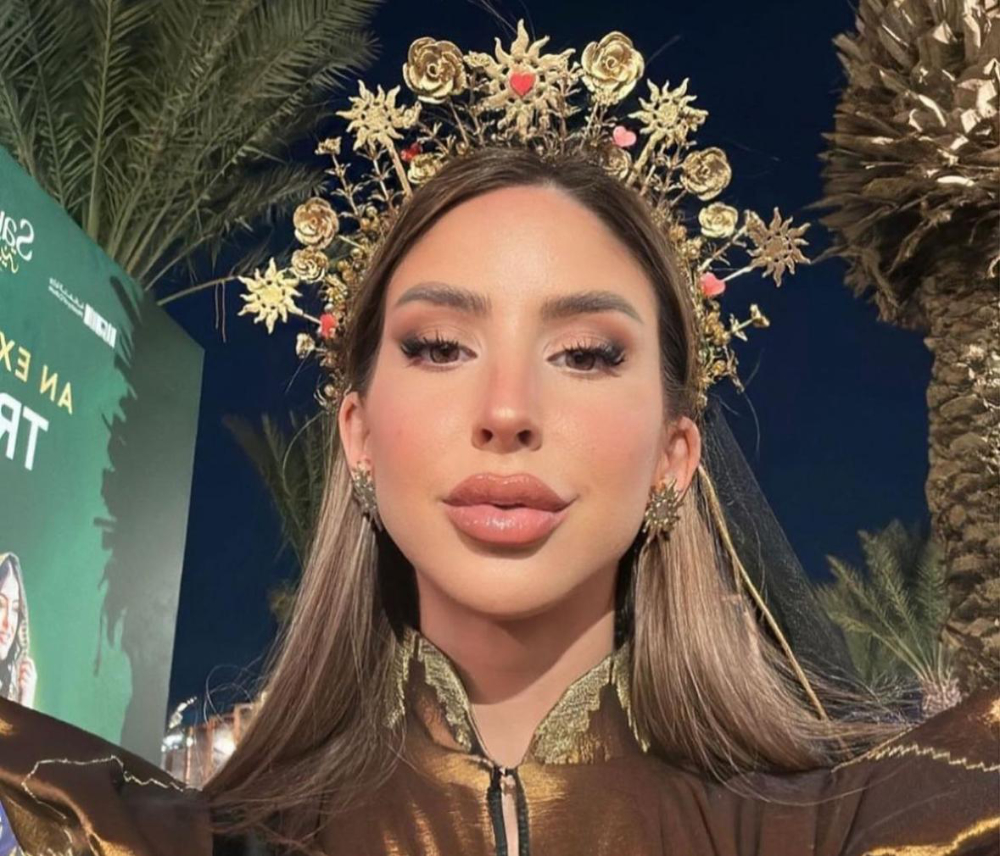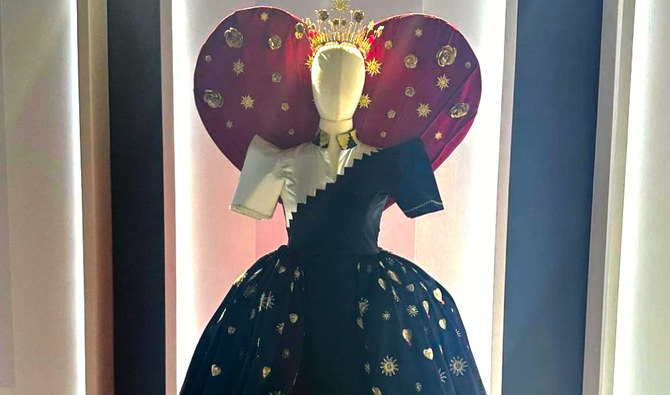RIYADH: Saudi fashion designer Ghaydaa Majdaly is using 3D technology to design and produce clothes, helping to save resources and driving sustainability in the Kingdom.
The COVID-19 pandemic posed challenges for many people in their daily lives, including Majdaly, who turned her creativity into the study of sustainable fashion.
“During the pandemic, when all the shops were closed, I thought to myself if I would make a collection, where would I get fabrics and materials? So, I looked over the collections I made previously to see what pieces I should use for my new fashion collection,” she said.
“My first sustainable fashion piece was made out of plastic water bottles, given that plastic bottles severely damage our environment. I took those bottles and had them run through a machine to make sustainable and environment-friendly fabrics.”
Realizing the importance of sustainability in fashion, Majdaly began learning how to make fabrics using 3D technology. She also reuses fabrics to produce new fashion pieces.

A model shows of the creation during Saudi Cup weekend in Riyadh. (Supplied)
“I always keep in mind and follow the zero-waste strategy when designing pieces. The extra fabrics I have are used to make either small handbags or accessories, so there are no fabrics wasted in the process,” she said.
“There was a blouse that I no longer wore, but wanted to give it a second chance, so I took the pocket out, inserted it into the 3D machine and recreated a new piece from it.”
With 3D software programs simplifying the design process and improving product quality while reducing the environmental footprint, fashion designers are changing the way they approach their products, as well as pattern making and fittings.
Majdaly shared the secrets of designing pieces using 3D technology with Arab News.
HIGHLIGHTS
• The COVID-19 pandemic posed challenges for many people in their daily lives, including Ghaydaa Majdaly, who turned her creativity into the study of sustainable fashion.
• Realizing the importance of sustainability in fashion, she began learning how to make fabrics using 3D technology. She also reuses fabrics to produce new fashion pieces.
• Despite the technology’s ability to create photorealistic versions of clothes, handbags and accessories, addressing sustainability at the same time, it comes with challenges that vary from one designer to another.
“The 3D machine and the filaments are used to make 3D fabrics. I have several colored filaments, and the secret to all of this is the programs I use when plugging the 3D machine and making 3D fabrics,” she said.
Despite the technology’s ability to create photorealistic versions of clothes, handbags and accessories, addressing sustainability at the same time, it comes with challenges that vary from one designer to another. For Majdaly, designing a piece using 3D technology requires time.
“It takes a lot of time making anything using 3D. Even if it is a small, squared piece, it could take around three hours, and the more detailed the piece, the longer it takes to design,” she said.
Nevertheless, for Majdaly, 3D and sustainable fashion is “a deep, big field, and I think we should all stay tuned to the use of 3D in the fashion industry.”
Praising the efforts of the Saudi Fashion Commission in addressing and implementing sustainability in the Kingdom’s fashion sector, she said: “In the last workshop organized by the fashion commission, they brought samples of sustainable fabrics, and this is what I hope we would have more of as Saudi fashion designers to make more sustainable fashion pieces.”
Majdaly is the owner of the Ghydaa Majdaly fashion brand, and is a fashion consultant and trainer. This year, she published a fashion sketchbook to inspire and lead the way for future fashion designers in the Kingdom.

























